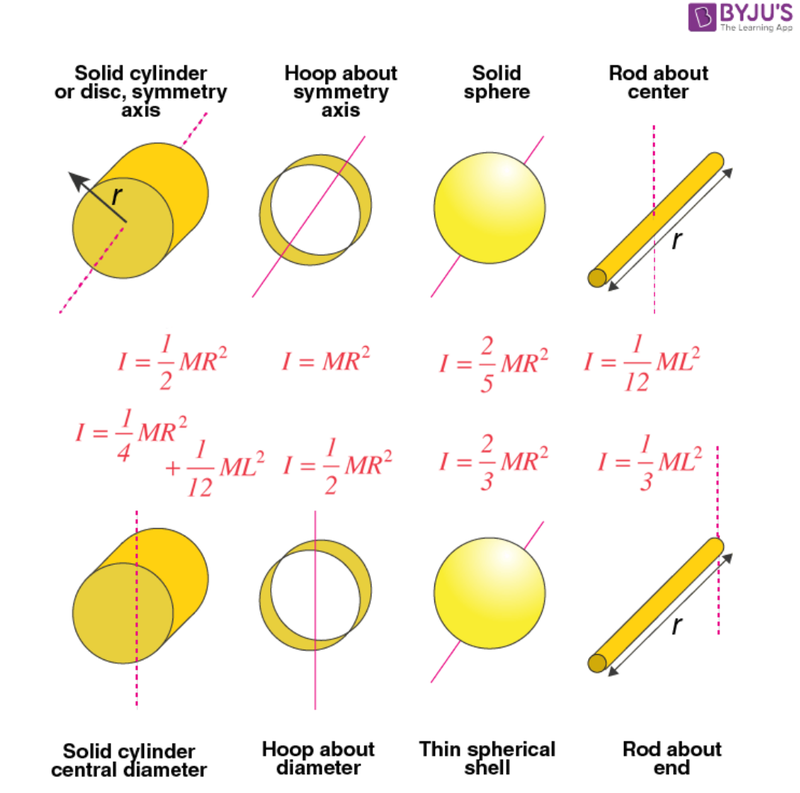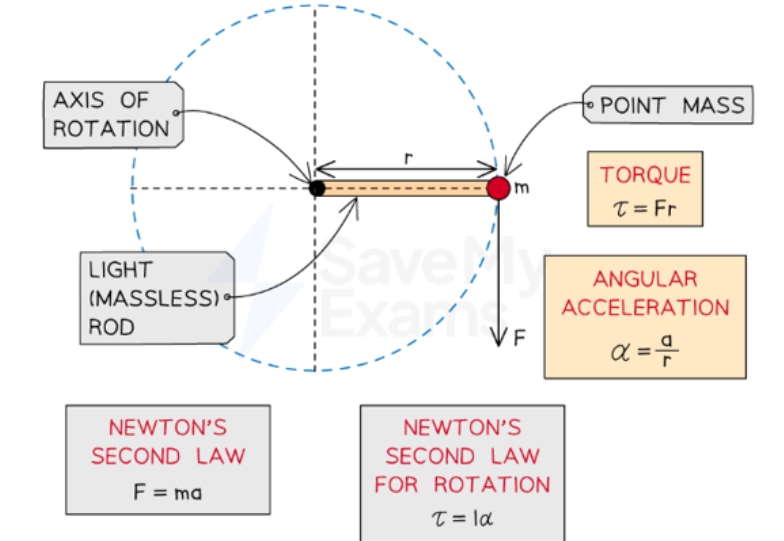Moment of Inertia
- The moment of inertia, represented by I, is the natural tendency for a body to resist its state of change.
- If a body is still, its inertia resists being put into motion, and if it is already in motion it resists change to the magnitude and direction of its velocity.
- Inertia is a passive property and cannot do anything on its own, it can only resist changes.
- For rotational motion, inertia is called rotational inertia or moment of inertia.
- Sound familiar? This is because Newton's first law is actually the law of inertia!
- Rotational inertia is measured in kgm² and in rotational motion depends on the distribution of mass around a chosen axis of rotation.
- Thus rotational inertia is dependent on many factors such as the shape, density and orientation relative to the axis of rotation of a body.
- The moment of inertia of a point mass m, rotating at a distance r from its axis is given as
I = mr²
- Some other moments of inertia for different shapes are:

- These equations generally aren't worth memorizing as they are usually provided.
Newton's Second Law for Rotational Motion
- Newton's second law for rotational motion states that torque is equivalent to the product of inertia and acceleration.

- This is the equivalent to Newton's second law of motion, which states that F = ma.
- Here force is replaced with torque and acceleration is replaced with angular acceleration.
- Lastly, mass is replaced with the moment of inertia, which reveals the secret identity of mass!
- Mass is actually just another name of linear inertia, and it serves the same purpose of rotational inertia, as it resists changes in linear motion.

Sources